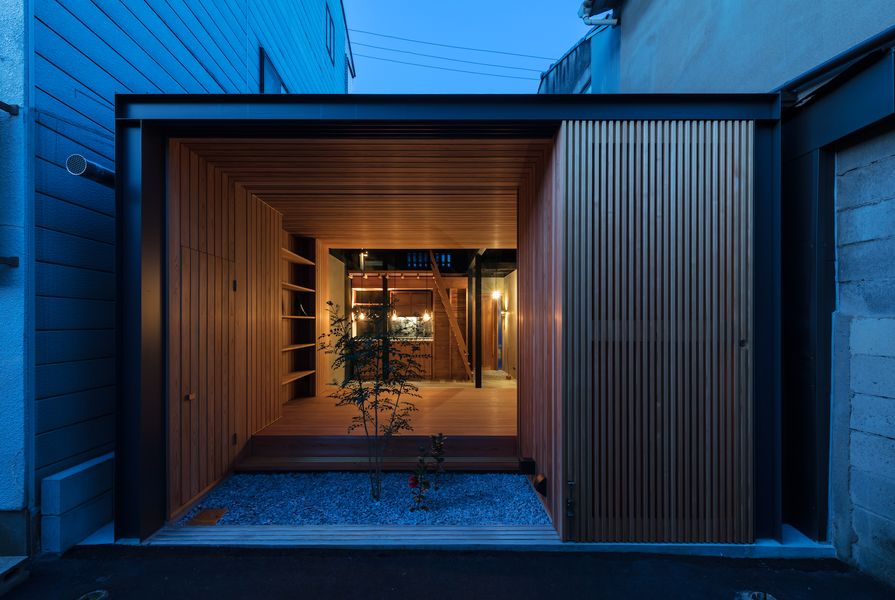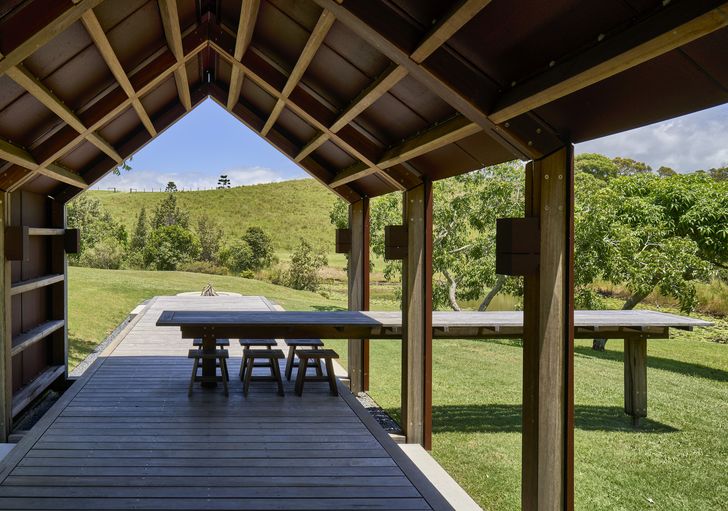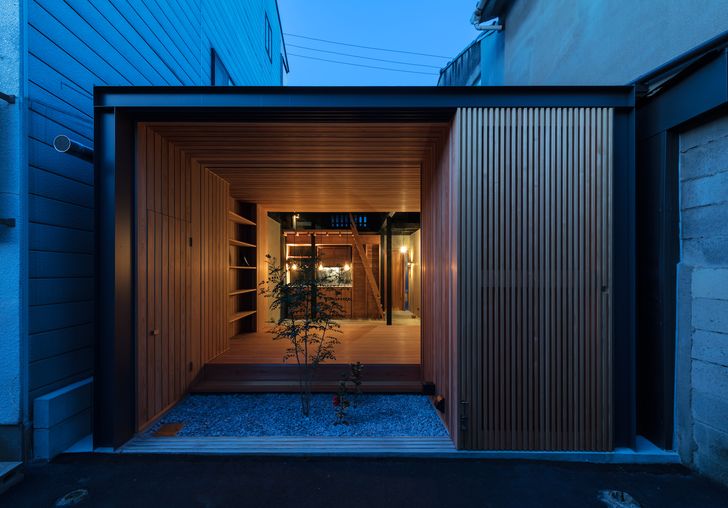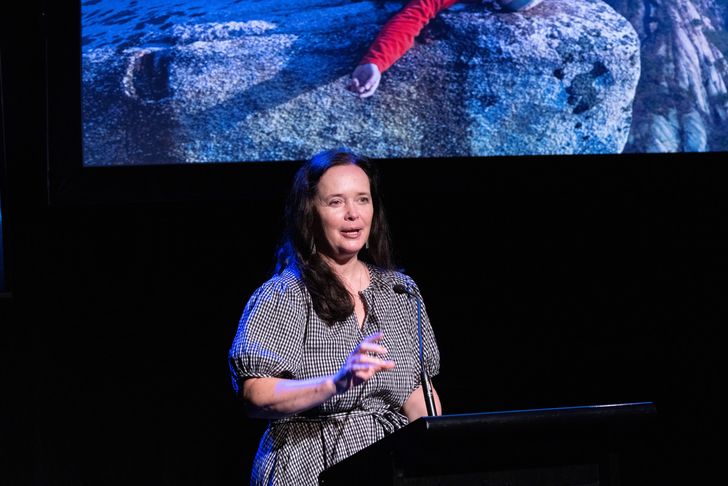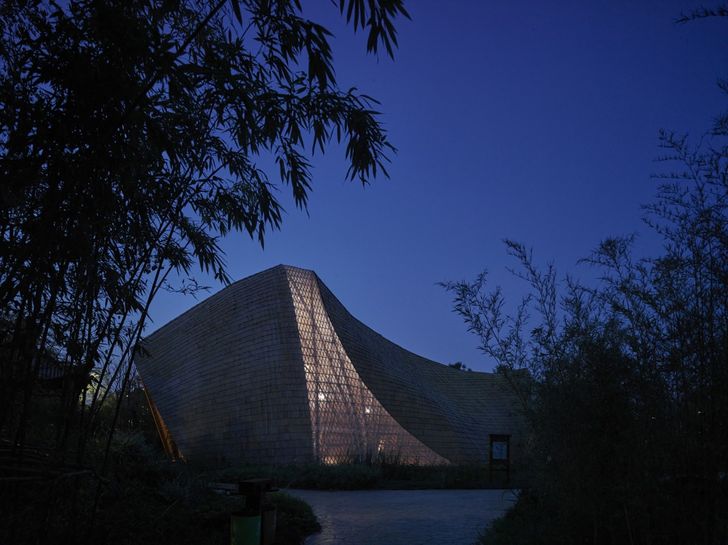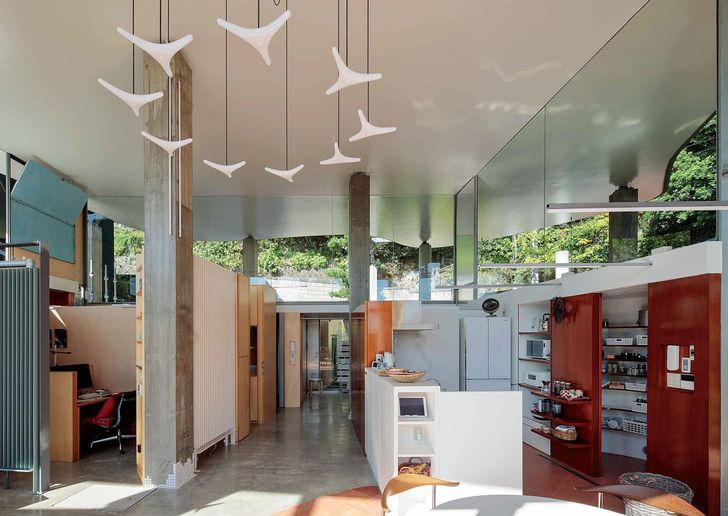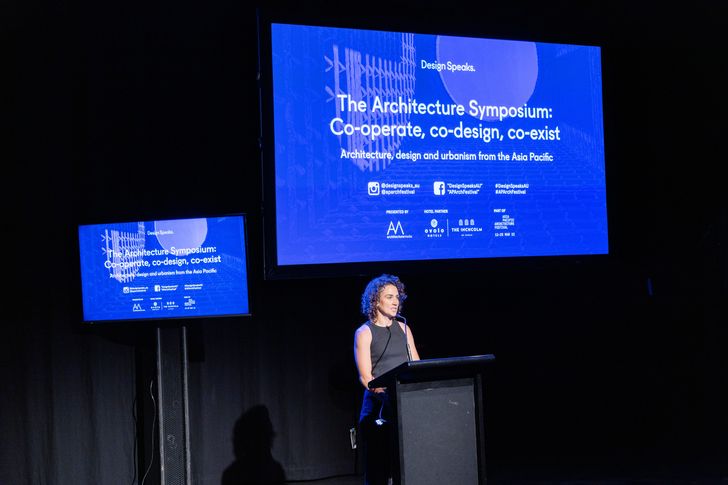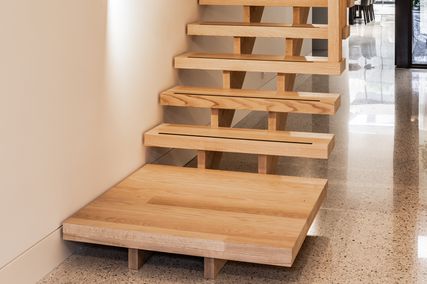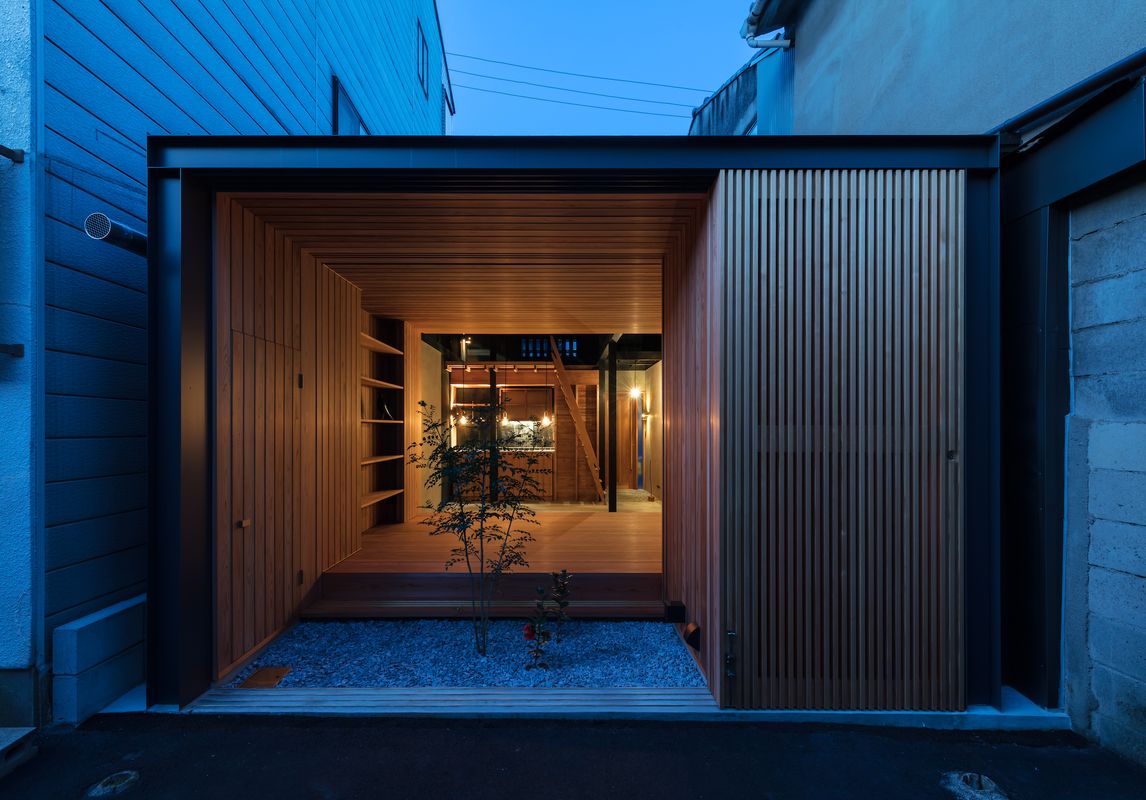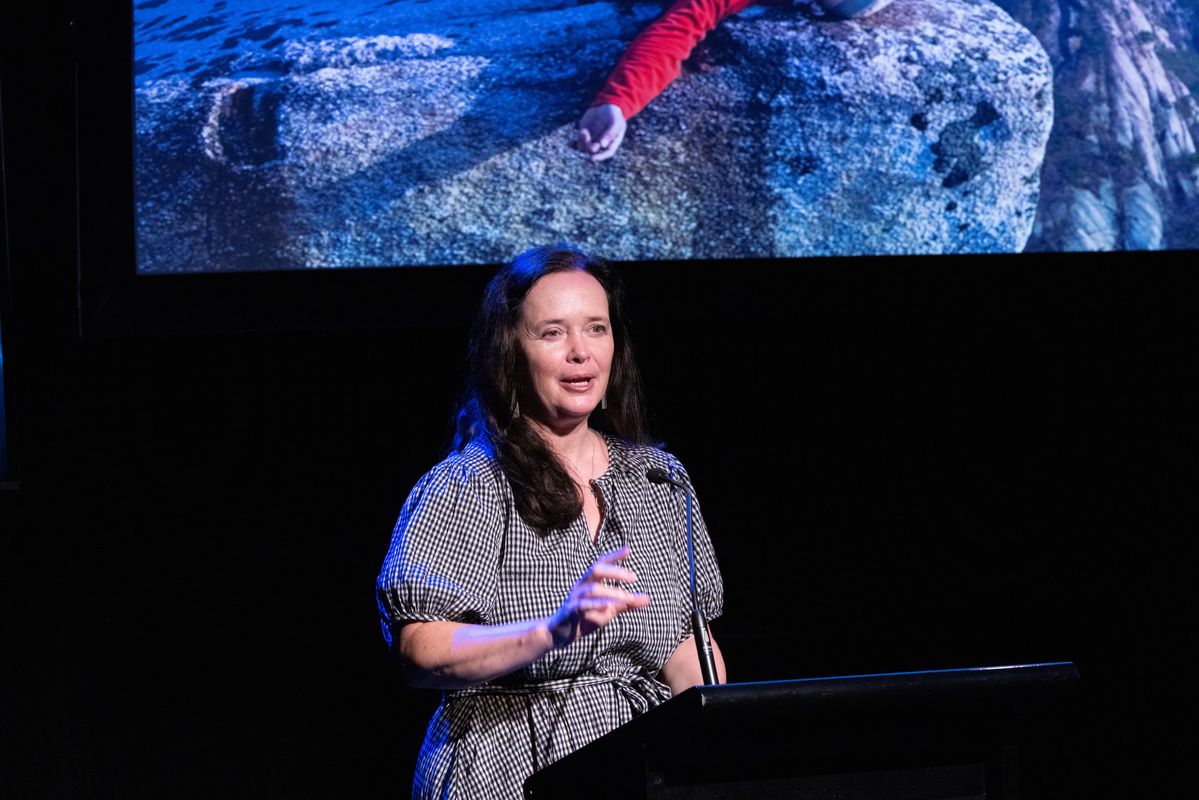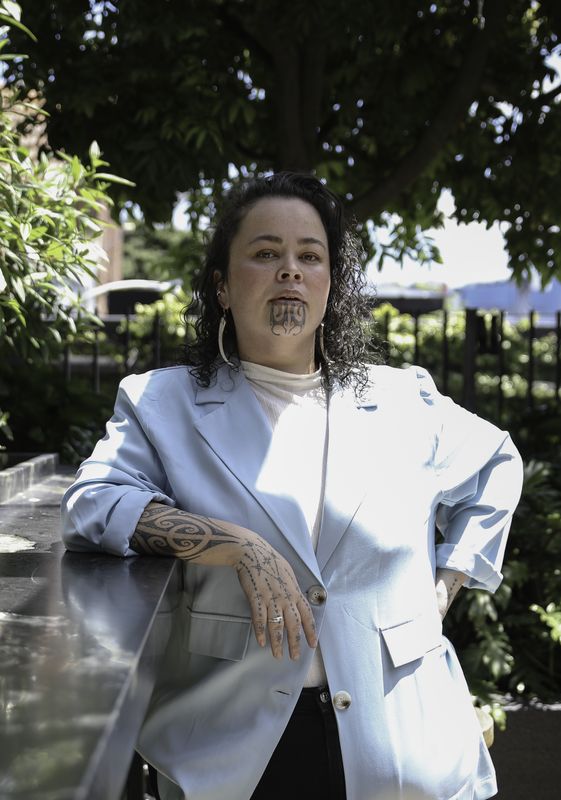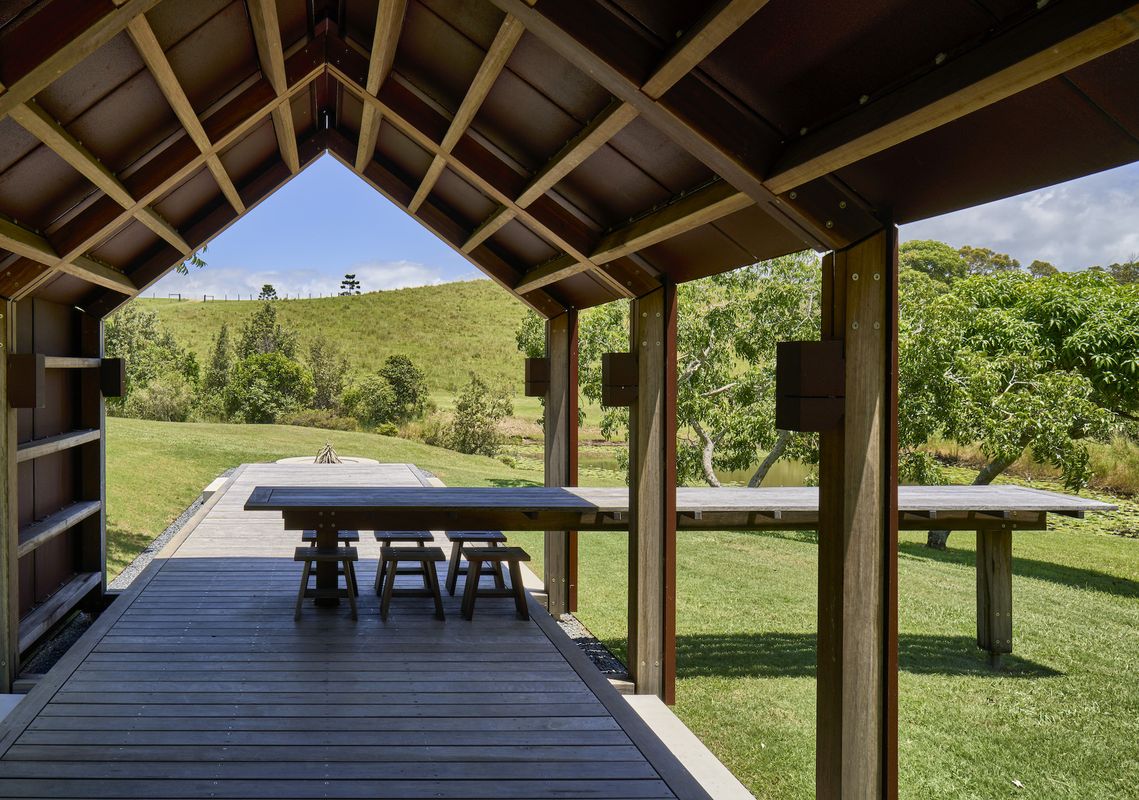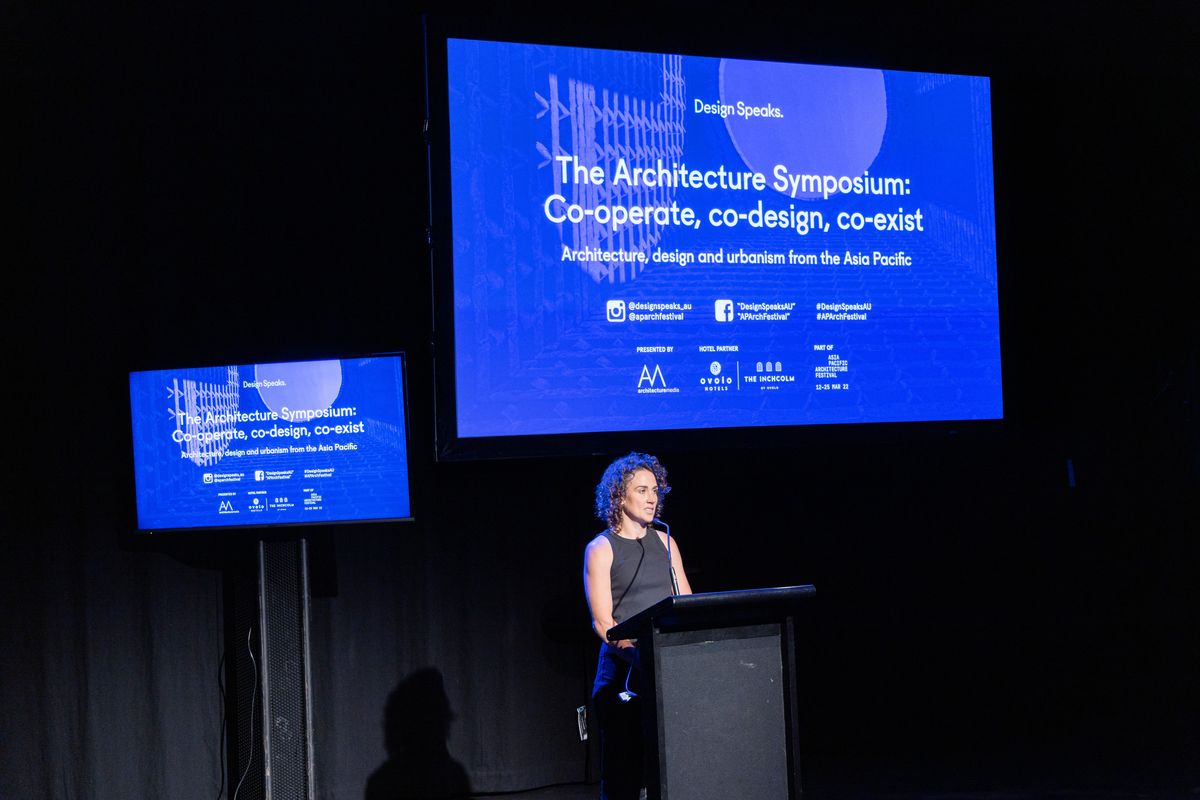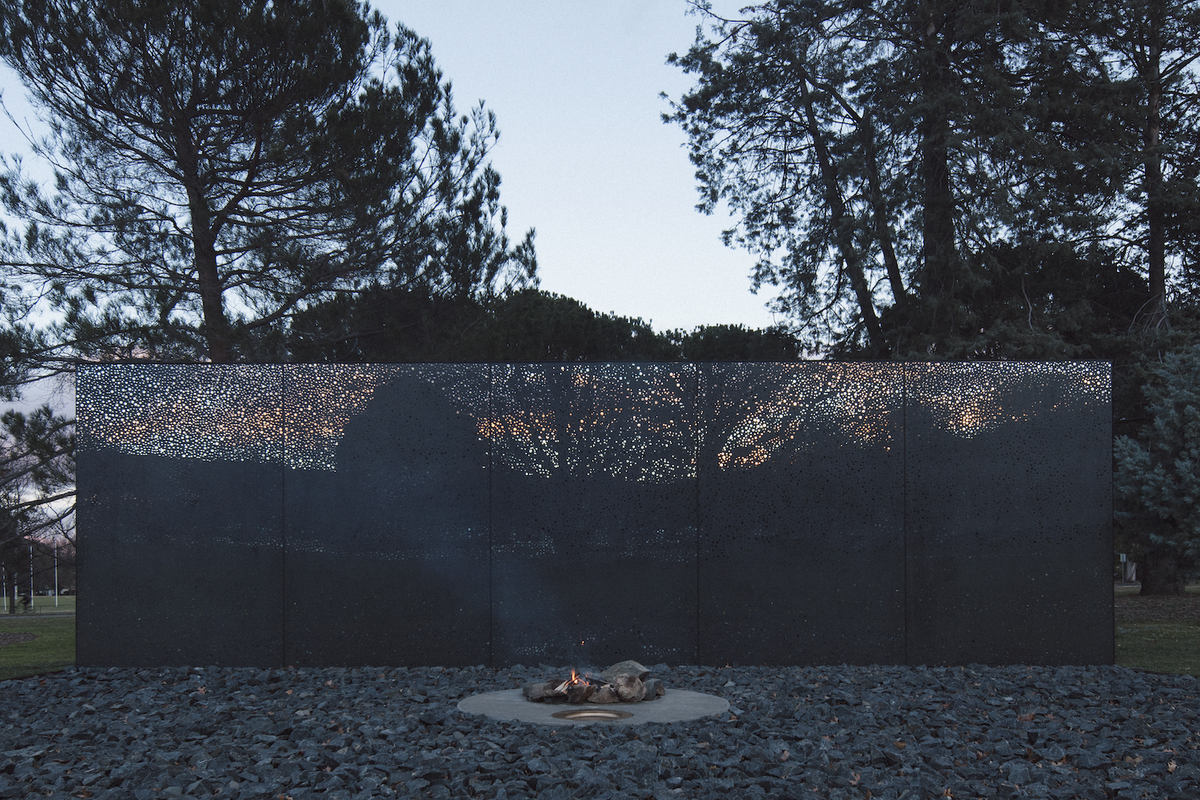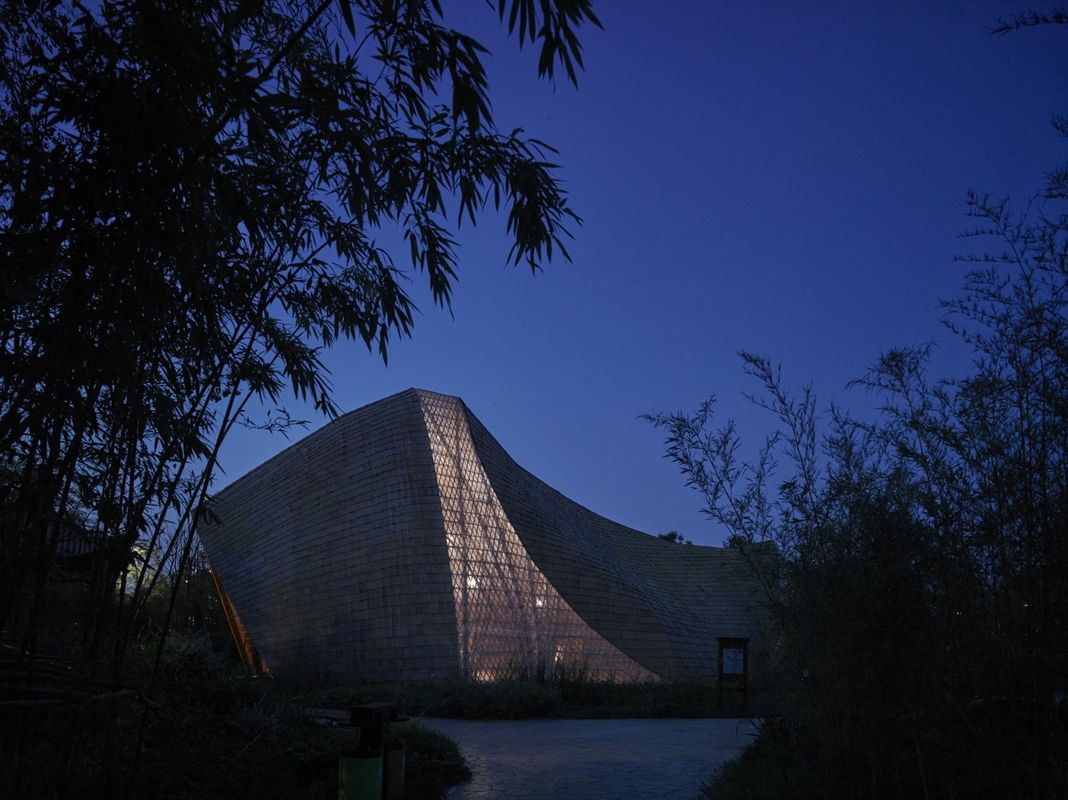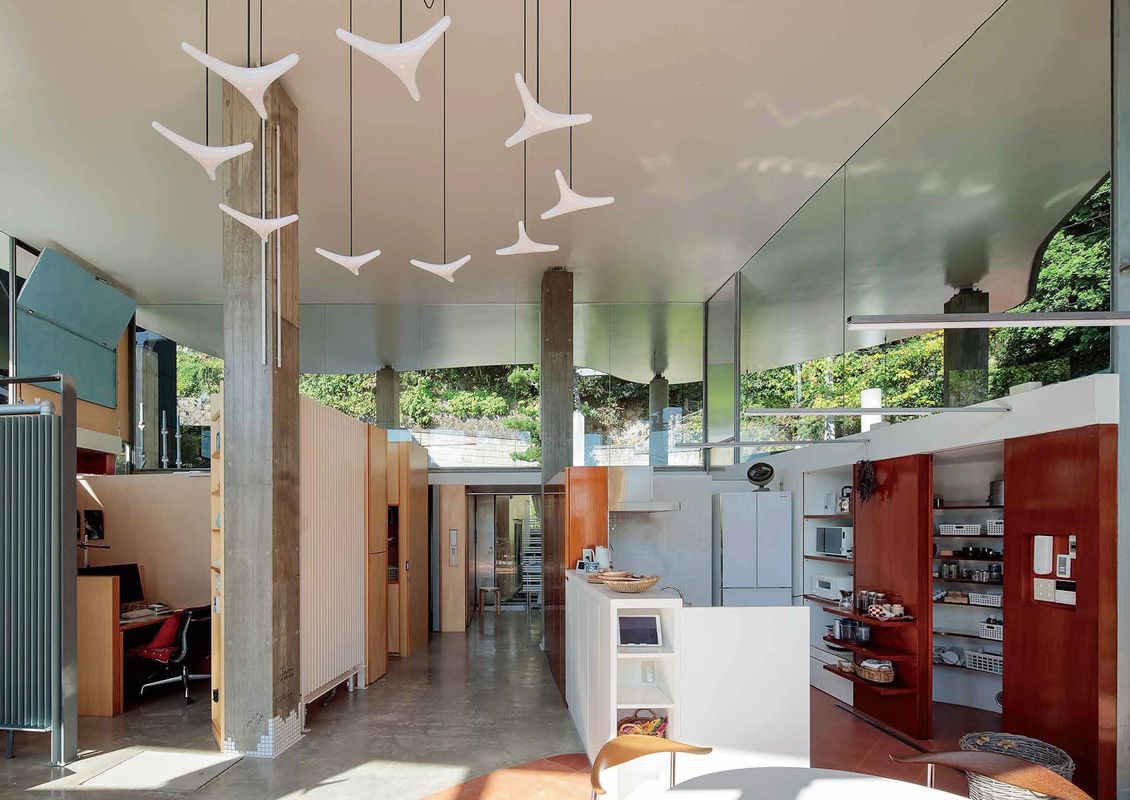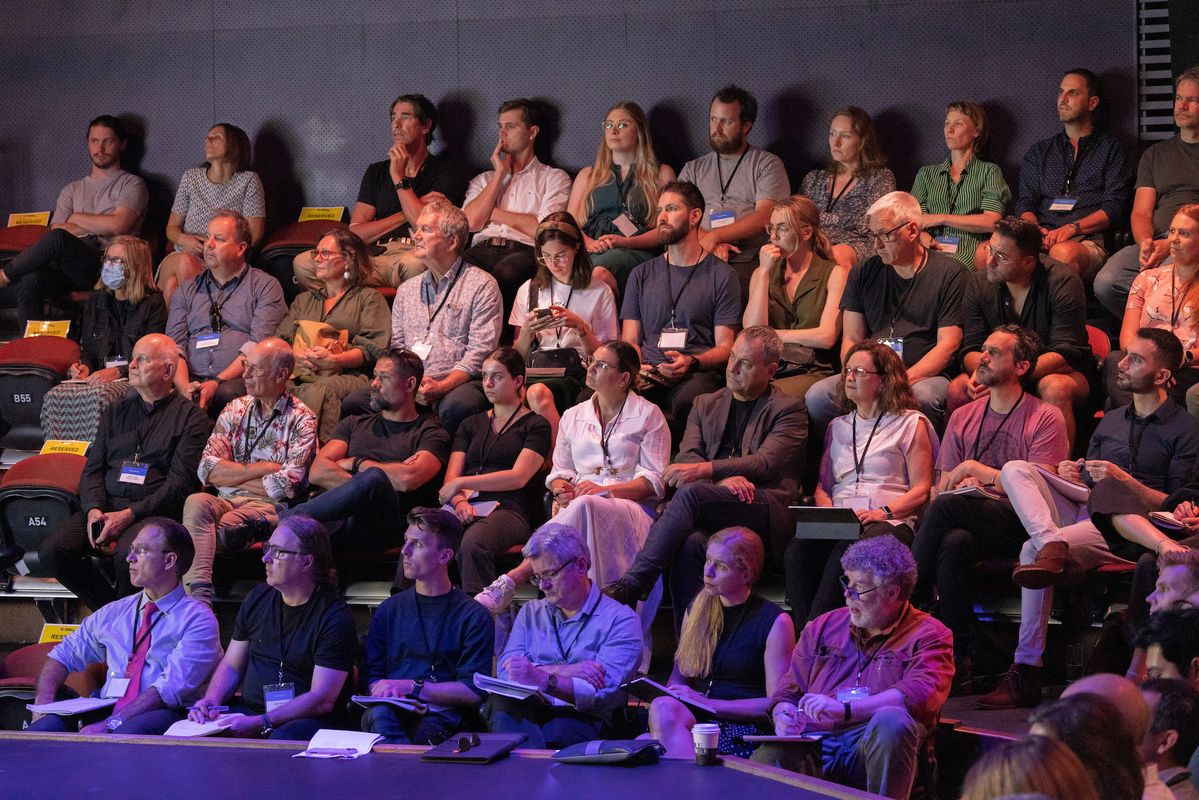Brisbane’s Asia Pacific Architecture Festival continues to thrive despite the prolonged impact of a global pandemic. This year, the festival’s centrepiece, the Architecture Symposium, had to reckon with a flood-induced venue relocation and an unfortunate calendar clash with the first day of the Austalian Institute of Architects’ national conference. Thankfully, little evidence of these complications could be felt in the Underground Theatre of Brisbane Powerhouse.
As might be expected, the majority of the speakers presented virtually with each of the three sessions featuring at least one in-person lecture. Happily, speakers adhered to the symposium theme: co-operate, co-design, co-exist. As a result, the symposium felt like a cohesive and constructive forum for addressing a range of pressing concerns facing the architectural profession.
Image: Michael Nicholson
The morning session featured Luke Hayward (Atelier Luke – Australian and Japan), Sanitas Pradittasnee (Sanitas Studio – Thailand), and Elisapeta Heta (Jasmax – New Zealand).
Hayward, having moved to Japan around a decade ago, realised that his employment prospects would be limited and decided instead to found an architecture practice. His presentation was structured around the twin themes of “humility” and “naivety”, but he might easily have nominated “audacity” and “opportunity”.
Terrace house by Luke Hayward, near Demachiyanagi.
Image: Yohei Sasakura
Hayward cleverly exploited his status as a time-rich interloper to carefully observe and closely collaborate with local craftspeople. His work is simple, elegant and carefully crafted with tell-tale hints of Queensland architects Donovan Hill and James Russell evident in some of the more rarefied timber detailing. The lecture concluded with a compelling observation: that Australia’s recent prosperity has failed to instigate a commensurate advance in its design culture.
Elisapeta Heta of Jasmax (New Zealand).
Image: Supplied
The subsequent presentation by Elisapeta Heta neatly dovetailed Hayward’s concluding provocation by relating her interest in bi-cultural practice. While she freely admits Jasmax hasn’t “nailed this” yet, her body of work and consultative design process feels like a welcome reassessment of conventional attitudes to commercial practice.
Given the diverse and interconnected nature of our contemporary lives (and the dominant strain of individualism that predominates everywhere), it will be interesting to observe how bi-cultural practice might ultimately proliferate and solidify in the collective consciousness.
The middle session was perhaps the most compelling of the Symposium. Practitioners Song Yehao (SUP Atelier – China) and Marina Tabassum (Marina Tabassum Architects – Bangladesh) bookended a forceful and persuasive case for regenerative design advanced by Amanda Sturgeon (Mott MacDonald – Australia).
Amanda Sturgeon (Mott MacDonald) at Architecture Symposium 2022.
Image: Supplied
Sturgeon’s framing of the manifold challenges faced by the profession and the subsequent need for systemic design solutions called to mind Don Watson’s recent AS Hook address. Watson identified the life and work of renaissance polymath Leonardo Da Vinci as the final point in history that an individual might have been capable of embodying the full breadth of available human knowledge. True or not, Sturgeon reminds us that the challenges of today far exceed the expertise of a single discipline.
Yehao Song’s Bamboo Pavilion at Yangzhou Expo.
Image: SUP of THAD
Song and Tabassum’s presentations illustrated how some of the concerns outlined in Sturgeon’s lecture might find compelling and poetic expression in built form. Song began with a suite of bamboo-framed structures that explore the potential for this renewable, low-carbon material. His work draws upon traditional building techniques and exploits existing context to great effect.
One of the many highlights of Tabassum’s lecture was a review of her low-cost housing projects, buildings developed through close observation of local cultural practices, daily rituals of occupation, and the challenging ecosystem of the Bengal Delta. While it is commendable for architects to attempt to address the challenge of low-cost housing, it was notable that Tabassum actively engages in the post-occupancy evaluation of her work.
The Symposium concluded with presentations from artist Daniel Boyd (Australia), Erika Nakagawa (Erika Nakagawa Office – Japan) and Benjee Mendoza (BAAD Studio – Philippines).
Daniel Boyd collaboration with Edition Office on the Aboriginal and Torres Strait Islander War Memorial.
Image: Benjamin Hosking
Boyd’s collaboration with Edition Office on the Aboriginal and Torres Strait Islander War Memorial was a poignant illustration of the potential of artist/architect collaboration. This small, though intricate work melds indigenous cultural narrative with adroit manipulation of formal and material properties. The result is a powerfully atmospheric memorial with subtle, layered associations.
Momoyama House by Erika Nakagawa.
Image: Supplied by speaker
Nakagawa’s presentation was equally compelling for the relaxed attitude towards the material residue of human occupation and willingness to accept and celebrate the detritus of urban life. Rather than seeking to sanitise spaces, Nakagawa actively incorporates eclectic assortments of furniture, décor and building services into her exquisite physical study models and drawings.
Architecture symposia of this kind ought to be informative and inspiring, but gone are the days when our profession might convene a roster of high-profile architects and uncritically faun over their fantastic, iconic portfolios. In an era of stark economic inequality, and under the lens of a timely and widespread reassessment of societal attitudes that have shaped our recent past, we are obliged to reassess our history and the stories we have told about our collective selves. We are now beginning to apprehend a more complex, contingent and nuanced understanding of our profession and the society it serves – one that includes a growing multitude of voices.
Architecture Media’s Katelin Butler at the Architecture Symposium.
Image: Supplied
Attending the 2022 APAF Architecture Symposium reminded me that the “value” of an approach or idea is subjective and increasingly contested. Where once architects may have relied on heroic formal expression and lavish technical skill to satiate the punters, it now seems increasingly necessary for architects to articulate a coherent frame of reference through which an audience will interpret and assess their work. The Architecture Symposium and the majority of its presenters met this moment.
Upon ducking out to catch an early bus back to the quotidian realm of backyard pizza and bedtime stories, I go replenished, inspired, and with a little more (renewable) fuel in the tank.
The Architecture Symposium is a Design Speaks event presented by Architecture Media, publisher of ArchitectureAU, and supported by hotel partner Inchcolm Hotel by Ovolo.

